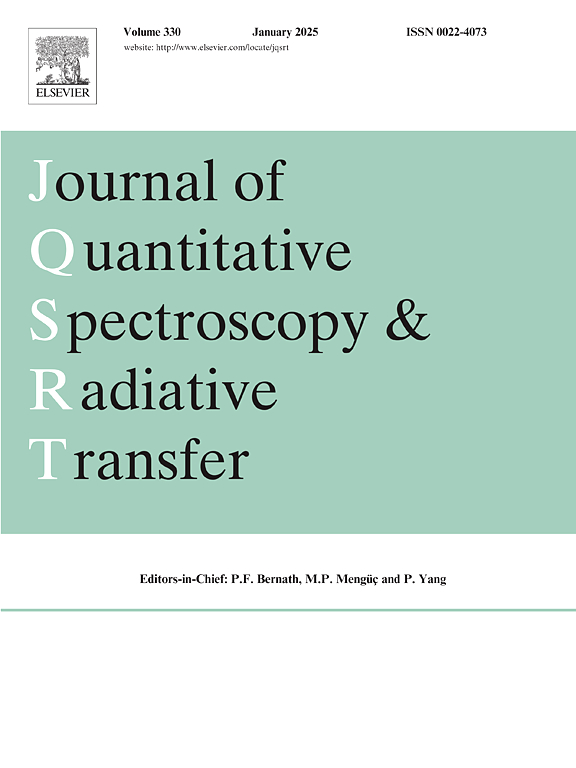应用氢原子的双振子表示来评价强磁化等离子体中Stark展宽计算的偶极矩阵元素
IF 2.3
3区 物理与天体物理
Q2 OPTICS
Journal of Quantitative Spectroscopy & Radiative Transfer
Pub Date : 2025-06-14
DOI:10.1016/j.jqsrt.2025.109527
引用次数: 0
摘要
在等离子体光谱应用的框架中,重新讨论了氢原子的双振子表示,这涉及到使用半抛物坐标求解Schrödinger方程。我们将这种形式应用于强磁场下的能级和波函数的数值计算,在这种情况下二次塞曼效应是重要的。基于当前天体物理学的需要,我们提供了一个可用于斯塔克线形码的偶极矩阵元的半解析公式。这些矩阵元素作为输入进入其中,它们用于量化线强度和线展宽的强度。我们给出了在10到100 kT之间的可见范围内计算光谱的样本,并讨论了一系列线的位置、强度和宽度对磁场的依赖关系。本文章由计算机程序翻译,如有差异,请以英文原文为准。
Applying the double-oscillator representation of the hydrogen atom to the evaluation of dipole matrix elements for Stark broadening calculations in strongly magnetized plasmas
The double-oscillator representation of the hydrogen atom, which involves the solving of the Schrödinger equation using semi-parabolic coordinates, is revisited in the framework of plasma spectroscopy applications. We apply the formalism to the numerical calculation of energy levels and wavefunctions in the presence of strong magnetic fields, at regimes such that the quadratic Zeeman effect is important. Motivated by current needs in astrophysics, we provide a semi-analytical formula for the dipole matrix elements that can be used in Stark line shape codes. These matrix elements enter therein as input, where they serve to quantify both the line intensities and the strength of the line broadening. We present samples of calculated spectra in the visible range for fields comprised between 10 and 100 kT and discuss the magnetic field dependence of the positions, intensities, and widths of a selection of lines.
求助全文
通过发布文献求助,成功后即可免费获取论文全文。
去求助
来源期刊
CiteScore
5.30
自引率
21.70%
发文量
273
审稿时长
58 days
期刊介绍:
Papers with the following subject areas are suitable for publication in the Journal of Quantitative Spectroscopy and Radiative Transfer:
- Theoretical and experimental aspects of the spectra of atoms, molecules, ions, and plasmas.
- Spectral lineshape studies including models and computational algorithms.
- Atmospheric spectroscopy.
- Theoretical and experimental aspects of light scattering.
- Application of light scattering in particle characterization and remote sensing.
- Application of light scattering in biological sciences and medicine.
- Radiative transfer in absorbing, emitting, and scattering media.
- Radiative transfer in stochastic media.

 求助内容:
求助内容: 应助结果提醒方式:
应助结果提醒方式:


